La Marzocco Strada @ 2010 WBC London Coffee Show
The real next generation: La Marzocco Strada @ WBC London Coffee Show
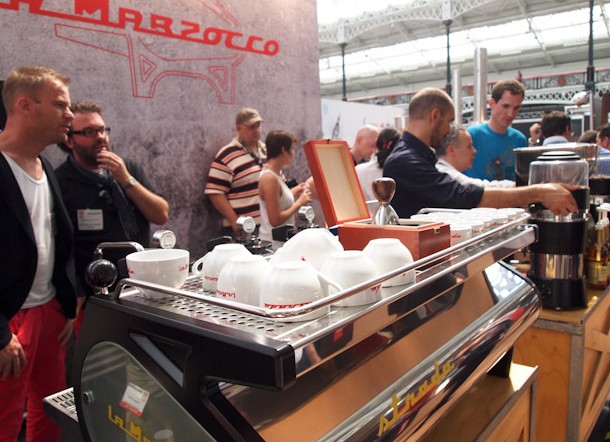
From the concept prototype, which was first unveiled in SCAA in Atlanta in June last year, to the release of Milan more than half a year ago, friends who are paying attention should have drooled. Although it is not yet a mass production model, it can be seen that it is even different from the prototype shown in Milan at the end of last year. This is what Gizmodo calls the "bar player's dream" dream machine: the La Marzocco Strada.
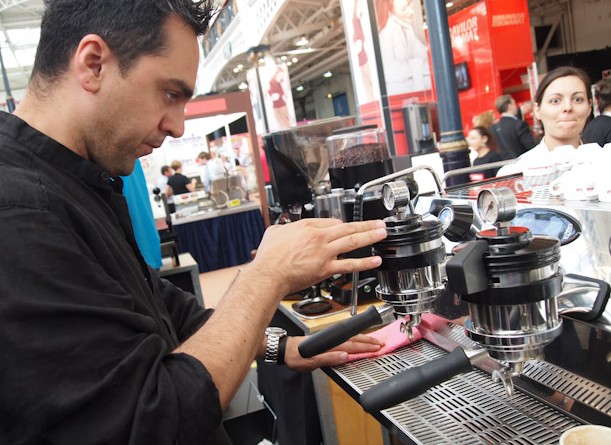
Friends who are not familiar with Strada can first take a look at the characteristics of the appearance of the head: pressure gauge head, Paddle.... Did you guess? Let's take a look at a picture posted by La Marzocco's official Blog:
Nine atmospheres, 25 seconds, one ounce. How many people are confined to the three golden rules because they have read too many so-called textbooks? for the first time, La Marzocco allows bar operators to bring the weight of cooking to the status of bakers. In response to the rise of Single Origin Espresso, Strada can give bar players complete freedom to adjust pressure in real time during the cooking process. Imagine that there are so many different places of origin and treatment, baking and shipping processes, is there only one rule for Espresso to abide by? Of Course Not.
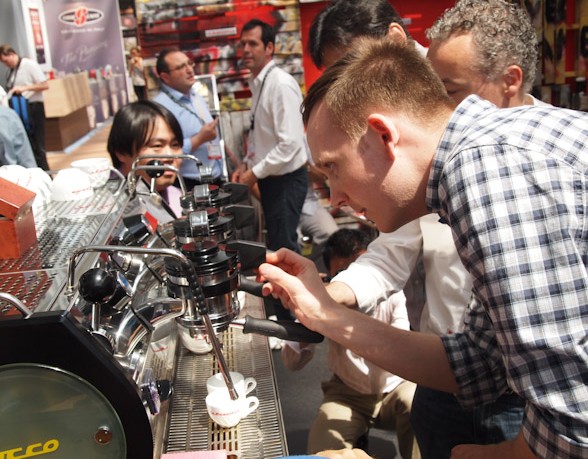
I made a total of two videos in London. The first one is the 2005 world champion Klaus Thomsen operating Strada MP (Mechanical pump) version. I can see that he wants to simulate the pressure curve in Shot # 4:
Klaus Thomsen playing with Strada from Riesling.no on Vimeo (the movie could not be loaded)
Did you notice the rise and fall of the watch? So handsome.
Finally, let's take a look at another legend operating Strada: David Schomer of Vivace Espresso in Seattle, USA:
David Schomer playing with Strada from Riesling.no on Vimeo
David also brings its own filler to use. It's an old practice, it's just used as an ordinary coffee machine, XD.
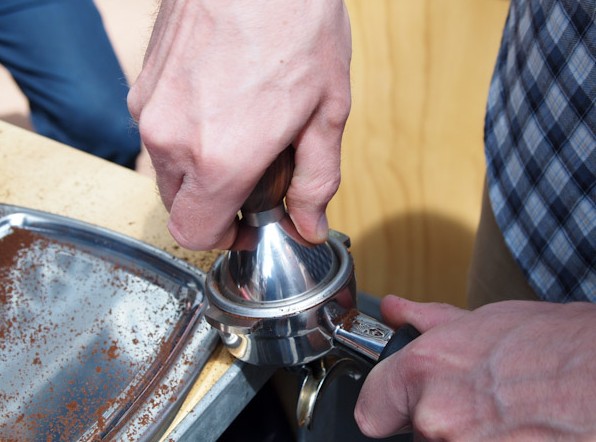
On-site equipped with Strada is a German Prorista filler, log handle + stainless steel base. Not only the feel is very good, the weight distribution is in the lower base, as soon as the hand is put down and turned around, it is done, and the filling action is much more stable. Calculated that it should include no more than 100 euros, if you want to order, you should buy a few of them while the euro is depreciating (I have sold all my coffee machines, so I have no desire).
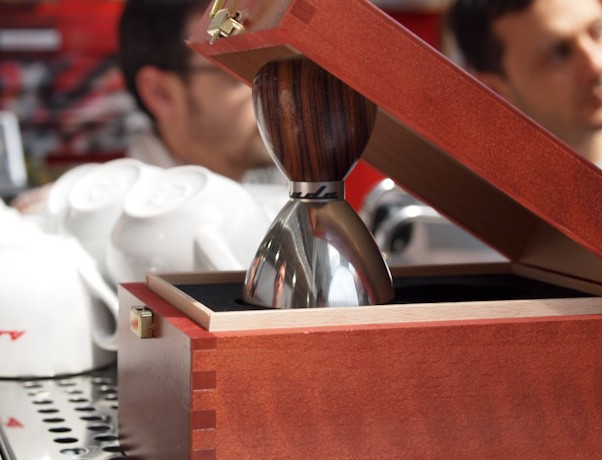
The appearance of the big fat clock of the Prorista filler. The middle neck can write by itself, this one is written on Strada and packed in a wooden box.
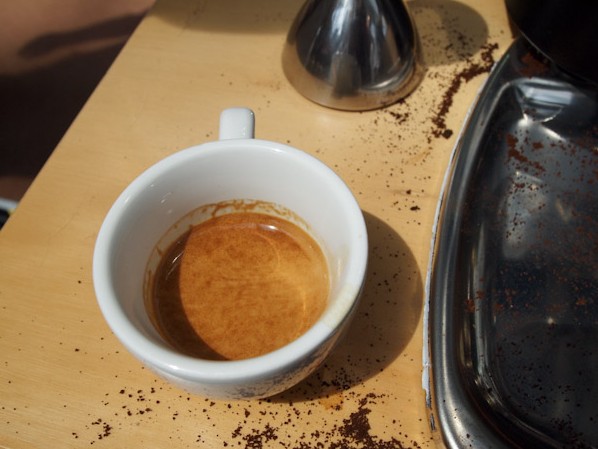
This is what Klaus brought me to drink. I've never compared to the same bean made in the traditional way, so there's no way to compare it, but this one tastes smooth.
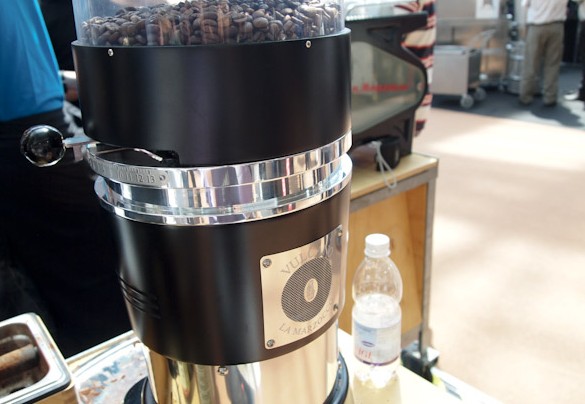
With the debut of Mazzer and La Marzocco's latest bean grinder Vulcano, which is a copy of the LM Vulcano in the 1960s, but the details are unknown.
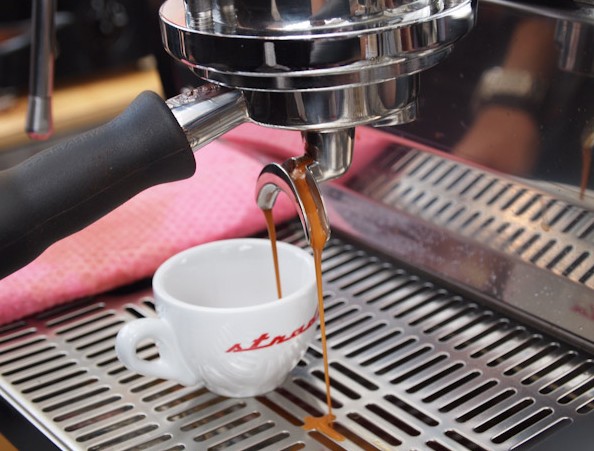
La Marzocco's new handle has three features: stainless steel (easy to clean), detachable shunt nozzle (washable interior), and vertical base (easy to press against the table).
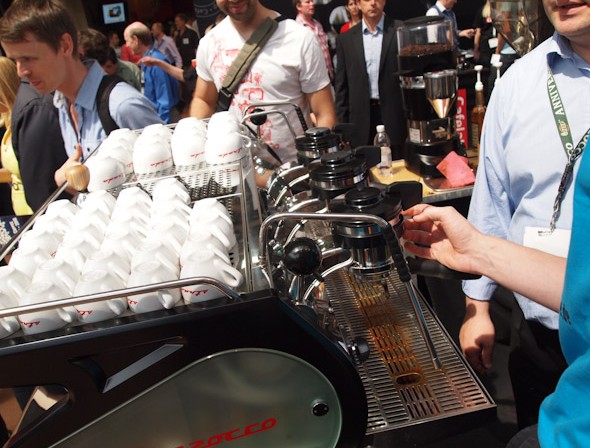
Strada's other model, code-named Strada EP (Electronic Pump), lacks the pressure gauge on its head, which is not romantic enough, but this is the real top model of Gear Pump using the latest technology.
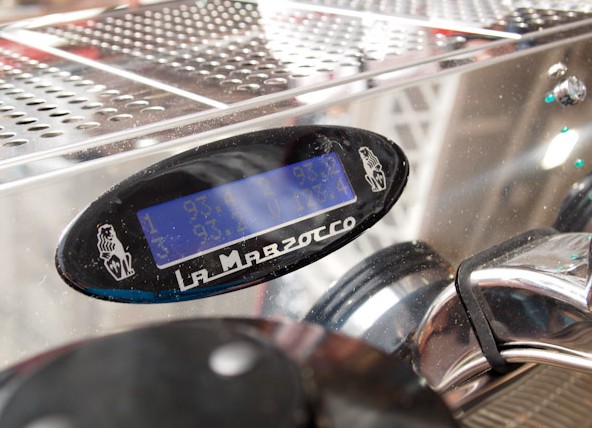
The central LED monitors the temperature and pressure of the three cooking heads in real time, and there are buttons on one side to adjust the "manual" and "automatic" modes. In manual mode, the bar player can adjust the cooking pressure of 0 ~ 12 Bar at will. Compared with MP, which can only gradually adjust 0 ~ 9 Bar, my feeling of operating EP is completely "real-time" adjustment. The stronger EP version is also another reason why bosses are willing to pay for it, which is that it can reproduce four sets of memory cooking curves and reproduce the Holy Grail in automatic mode.
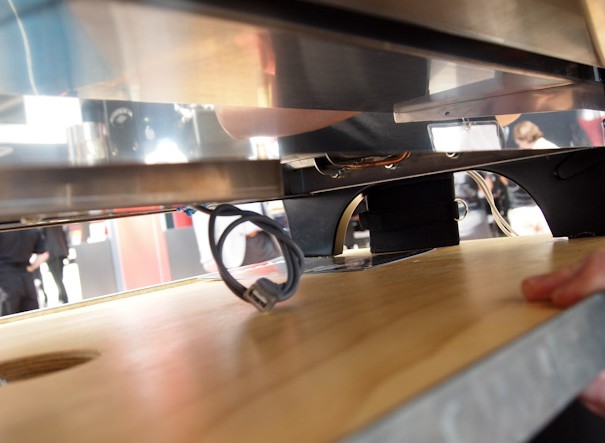
There is a USB connector at the bottom, which can be monitored by the laptop or set the cooking curve directly. Is it on the market? Of course not, but the German engineer at the exhibition told me that it would be mass produced before the end of the year. I just want to say that La Marzocco is serious about declaring the new revolution in Espresso.
Important Notice :
前街咖啡 FrontStreet Coffee has moved to new addredd:
FrontStreet Coffee Address: 315,Donghua East Road,GuangZhou
Tel:020 38364473
- Prev
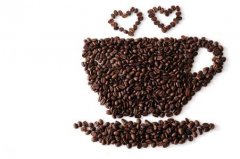
Coffee roasting is the most important step that affects coffee flavor.
The most important step that affects the flavor of coffee is the method of baking. There are many factors that affect baking, such as climate, humidity, hardness and water content of raw beans. Because there are so many variables, baking experience is the most important key. Before roasting, raw coffee beans have a fishy smell, and after baking, they will emit a strong aroma. And the roasting degree of coffee beans (roas)
- Next
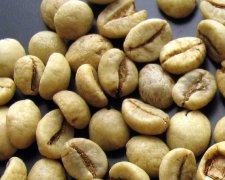
Well-known coffee raw beans introduce raw beans in Robusta, Java, Indonesia
Java Robusta raw beans Indonesia Java robusta green bean in Indonesia in the early 1970s, Java cut down Arabica trees introduced by most Dutch and planted Robbosa beans instead. Since then, Java coffee has become greasy, plain, and has a strong smell of wheat and tea. Of the few remaining Arabica estates, Djampit is the most famous.
Related
- Beginners will see the "Coffee pull flower" guide!
- What is the difference between ice blog purified milk and ordinary milk coffee?
- Why is the Philippines the largest producer of crops in Liberia?
- For coffee extraction, should the fine powder be retained?
- How does extracted espresso fill pressed powder? How much strength does it take to press the powder?
- How to make jasmine cold extract coffee? Is the jasmine + latte good?
- Will this little toy really make the coffee taste better? How does Lily Drip affect coffee extraction?
- Will the action of slapping the filter cup also affect coffee extraction?
- What's the difference between powder-to-water ratio and powder-to-liquid ratio?
- What is the Ethiopian local species? What does it have to do with Heirloom native species?

